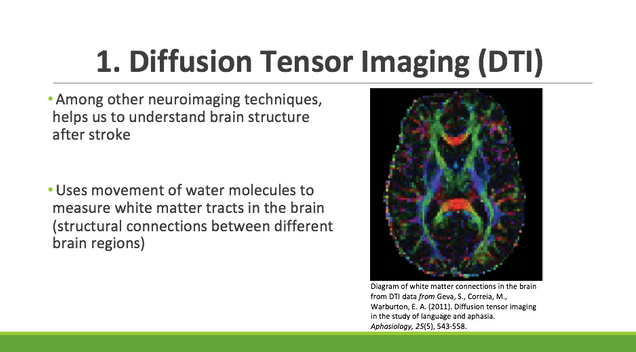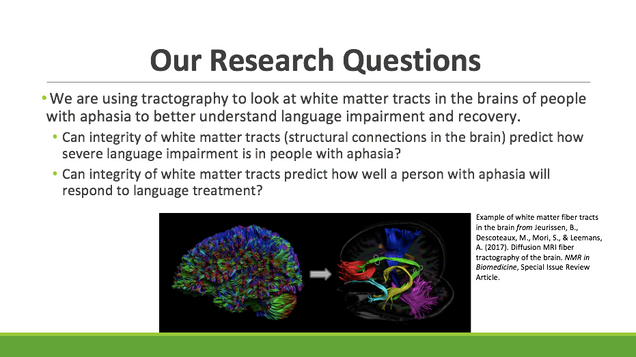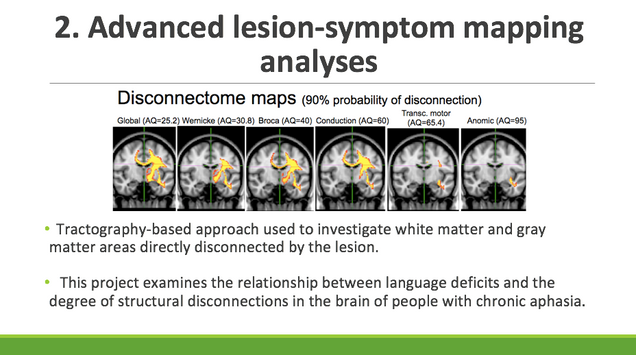White Matter Connectivity
Diffusion Tensor Imaging
Neuroimaging data can be used to help understand underlying impairment in aphasia. We are currently analyzing diffusion-weighted imaging data collected as part of an NIH/NIDCD P50 (1P50DC012283-01) grant focused on the neurobiology of language recovery in aphasia. Our aim is to use tractography to characterize white matter tracts of people with aphasia and to determine whether white matter tract integrity (i.e., structural connections between different brain regions) is predictive of aphasia severity as well as treatment recovery. In the long term, this information can hopefully be integrated with other neural predictors as well as behavioral predictors to provide a comprehensive picture of treatment recovery in people with aphasia across a variety of profiles.
Structural Disconnection Associated with Language Impairment
The analysis of residual white matter connections between brain regions is essential to understand language impairment in post-stroke aphasia. Tractography studies have found that white matter integrity is a good predictor of language outcomes after stroke. However, few studies investigated the relationship between seemingly spared but directly disconnected white matter pathways and language impairments in chronic aphasia. Probabilistic maps of disconnection based on anatomical connectomes of healthy controls are a complementary method to measure the impact of the lesion on neuronal circuits (http://toolkit.bcblab.com/). This project examines the relationship between language deficits and the degree of structural disconnections in the brain of people with chronic aphasia. Disconnectome mapping would help us understand how structural damage can affect language outcomes after a stroke beyond cortical necrosis.




